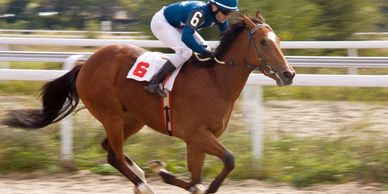Signed in as:
filler@godaddy.com
Signed in as:
filler@godaddy.com

At VALUE BET, we have created a TIME-BASED-ALGORITHM. After analysing over 650 race results we believe TIME RATINGS are the FOUNDATION to predicting an outcome and the single most important attribute to forming an opinion on the outcome of a race. It is a highly complexed model in assessing TIME RATINGS for each horse due to so many variables impacting the time of race. Pace of the race, wind speed and direction, conditions of the going and the different racetracks all have a major impact on TIME ASSESSMENTS. However we use a unique model to try and present the most accurate TIME RATING for every horse.

Ultimately, VALUE BET focuses on the HORSE and its racing history - Many pundits do much research into the horses BREEDING however our analysis shows more focus needs to be on the horses FORM, specifically its last three races and the conditions of the race. The selection for investment needs to tick all the boxes, therefore the right FORM is imperative, the right MERIT RATING, the right DRAW , the right WEIGHT (WE DO CALCULATIONS ON DEAD WEIGHT), and racing over the right DISTANCE. We pay specific attention to horses who are either dropping in class or are on the up and rising in class with a light weight - with strong winning form and more importantly, above average Time Ratings - they are often ahead of the handicapper

Being confident in the jockey riding the horses we select is imperative, as is with the trainer of the horses. Ideally, the jockey has ridden the horse before and the trainer in a rich vein of form. but this is not mandatory. We also take note of JOCKEY/TRAINER combinations as statistically these produce good outcomes. Likewise, we believe certain trainers produce better results with sprinters and certain are better with horses racing over longer distances

Horses do perform better on certain tracks due to their running style, how they finish their races off and ability to handle turns. Left and Right handed tracks may also have an impact. We assess this by looking at past races and statistics found in any form book or race card. The track conditions can have a huge impact on racehorses performance. Depending on the horses action and soundness, softer conditions could could benefit the performance and therefore we recommend to study past races to see how horses have run in softer or heavy conditions.
We take a close look at horses switching surfaces - a horse may have poor POLY TRACK form and switch back to TURF where it had good form, and visa versa.

Like humans, horses may have an off day and we FORGIVE a poor run and don't FORGET it's previous form. You will also pick up valuable information by WATCHING HORSES PAST RACES on video. The comments in a race-card often do not tell the full story. A horse may have raced wide during the race or parts of the race, been slightly inconvenienced in running or not ridden out fully due to circumstance, and this may have impacted its final place in the race. The day will come where, like rugby players, horses or jockeys will wear a tracker so you will see the exact distance covered by the horse in a race and any sudden STOP-START movements such as being checked during the race.

We believe it is critical to assess the FITNESS & WELLNESS of the horse before placing a bet on it. This can be done by checking how often the horse has run in its last three outings, any period of rest longer than 45 days and getting further information (Trainer interviews) on reasons for the rest. Typically, a horse running within 21 days with no major resting periods should be relatively fit to be competitive. That is not to say a horse rested for several months cannot come out and win. It happens if the trainer has done the pre-work but on average most rested horses need a race or more to be fit to win.

Whilst most horses race with allumite shoes, other EQUIPMENT changes often result in a better performance and favourable result for a racehorse. These may be applying Blinkers (full or half) or a Tongue Tie for the first time. Cheek pieces, compression masks and earmuffs are other equipment options for a trainer to try.

There are several reasons to GELD (remove the colts testicles) a horse which you can study further but the message here is that horses can improve vastly once gelded. Not all do, but those that do can show significant improvement and this often results in finding a good VALUE BET. We monitor changes in weight of the racehorse before and after gelding. We watch the betting moves on GELDED horses racing for the first time as a GELDING, and try and listen to trainer interviews for further insights.

If a horse with average formlines had been heavily backed in one of its last three runs yet not performed, we dig deeper to understand why it was heavily punted and if anything went amis in the race it was heavily backed. Money on a horse is often a result of a horse without great form that has been performing above average in training. Often the horses have issues which the Trainer believes have now been resolved.
Enter your email and click SIGN-UP. Check your inbox (or junk folder) for a confirmation email. Accept it, then follow the next email to Create your Password